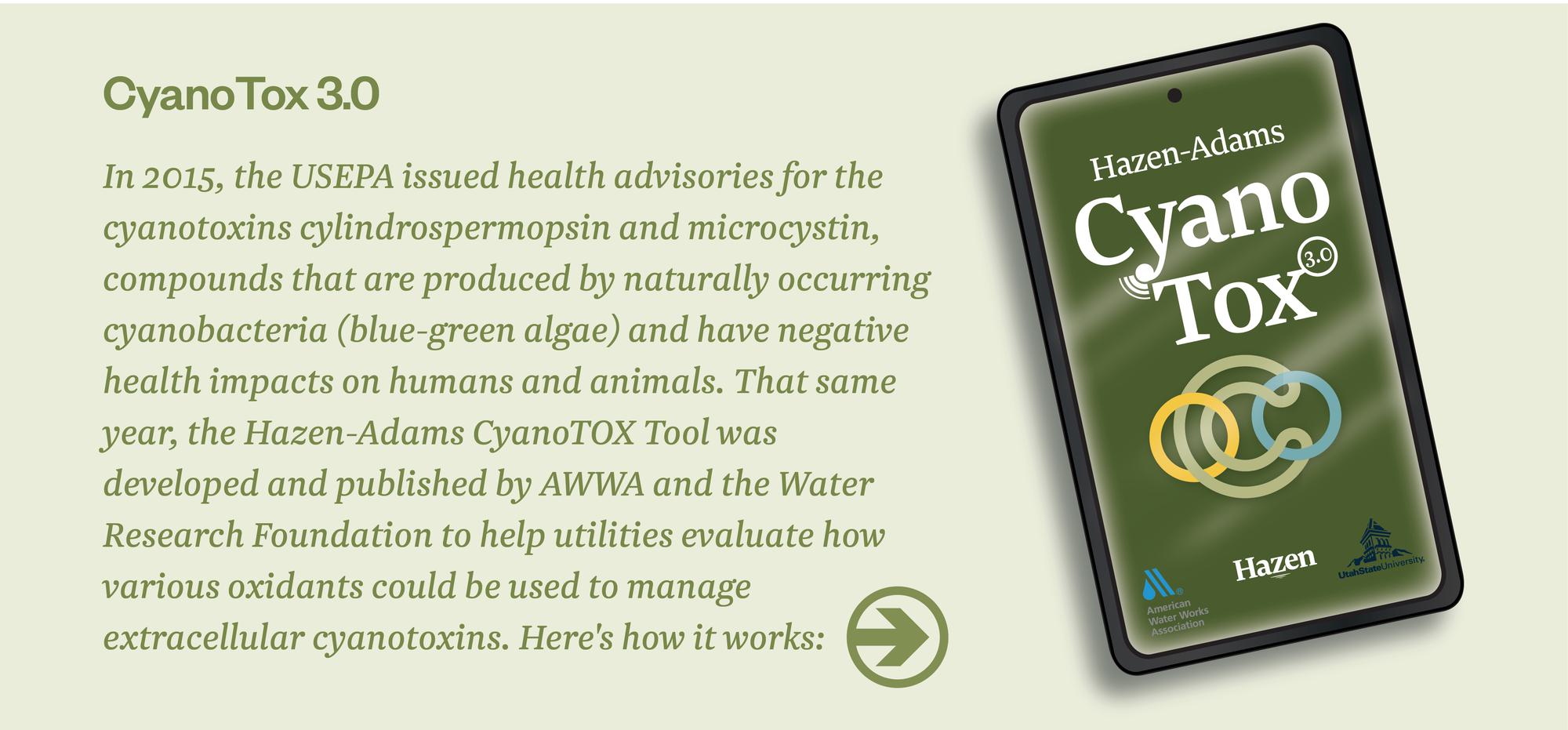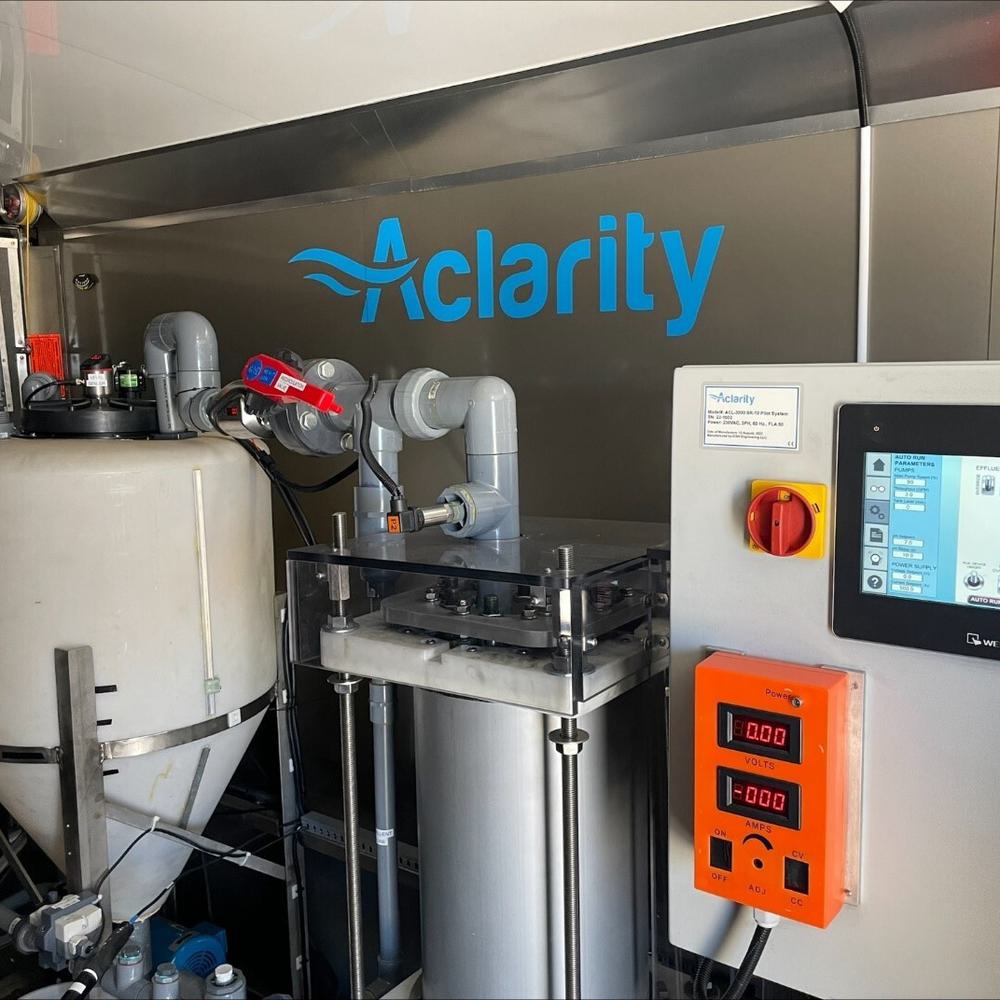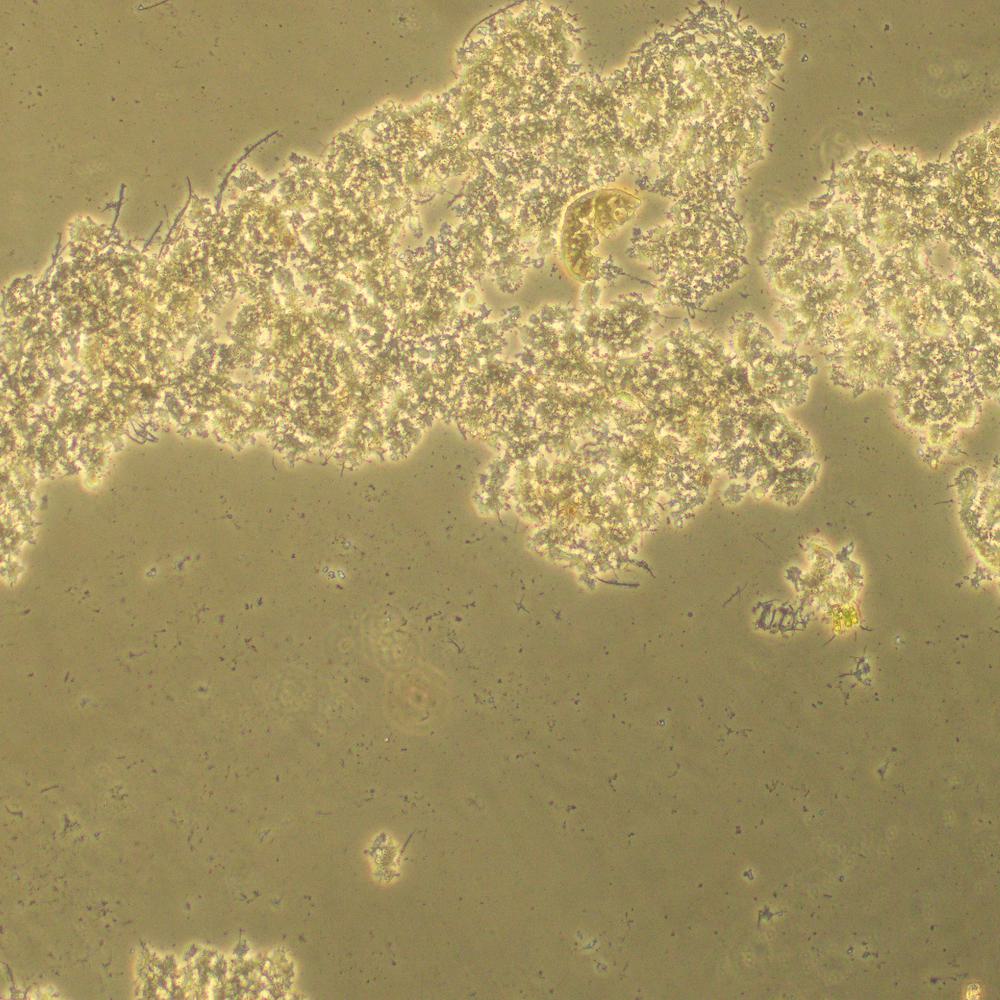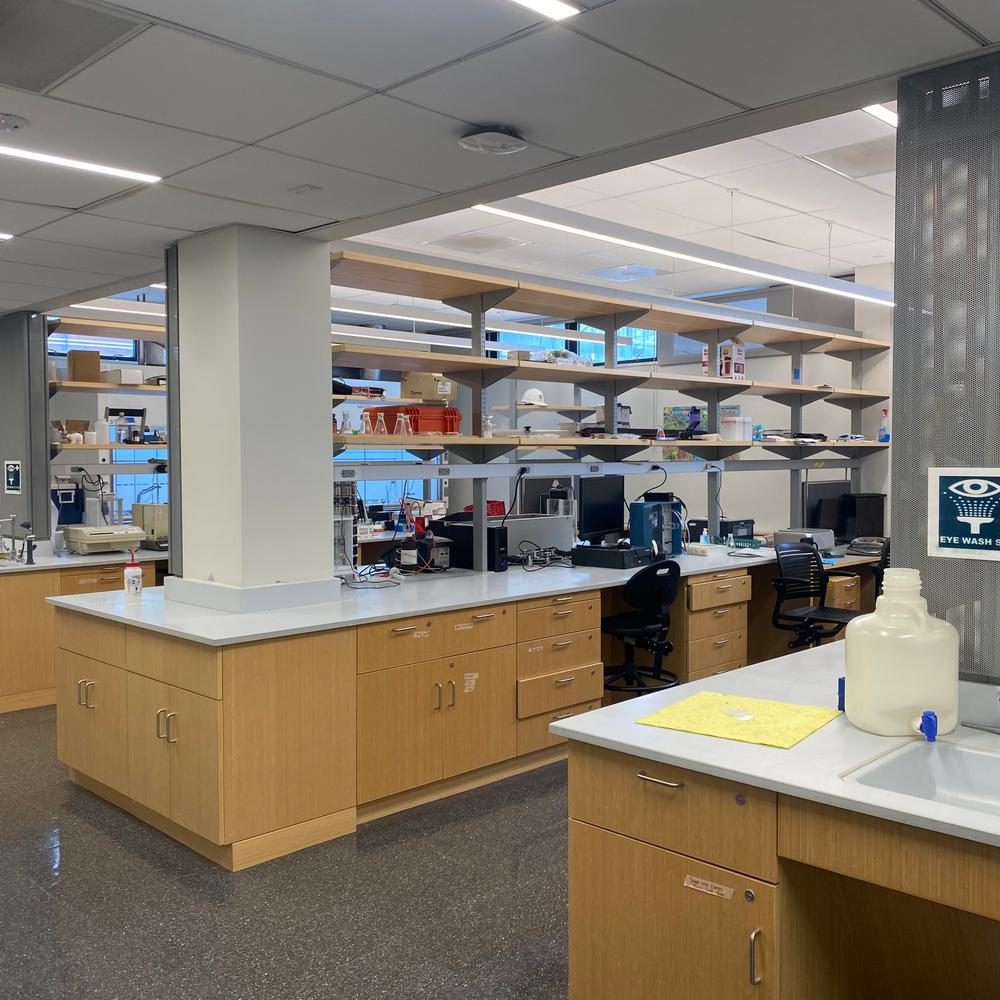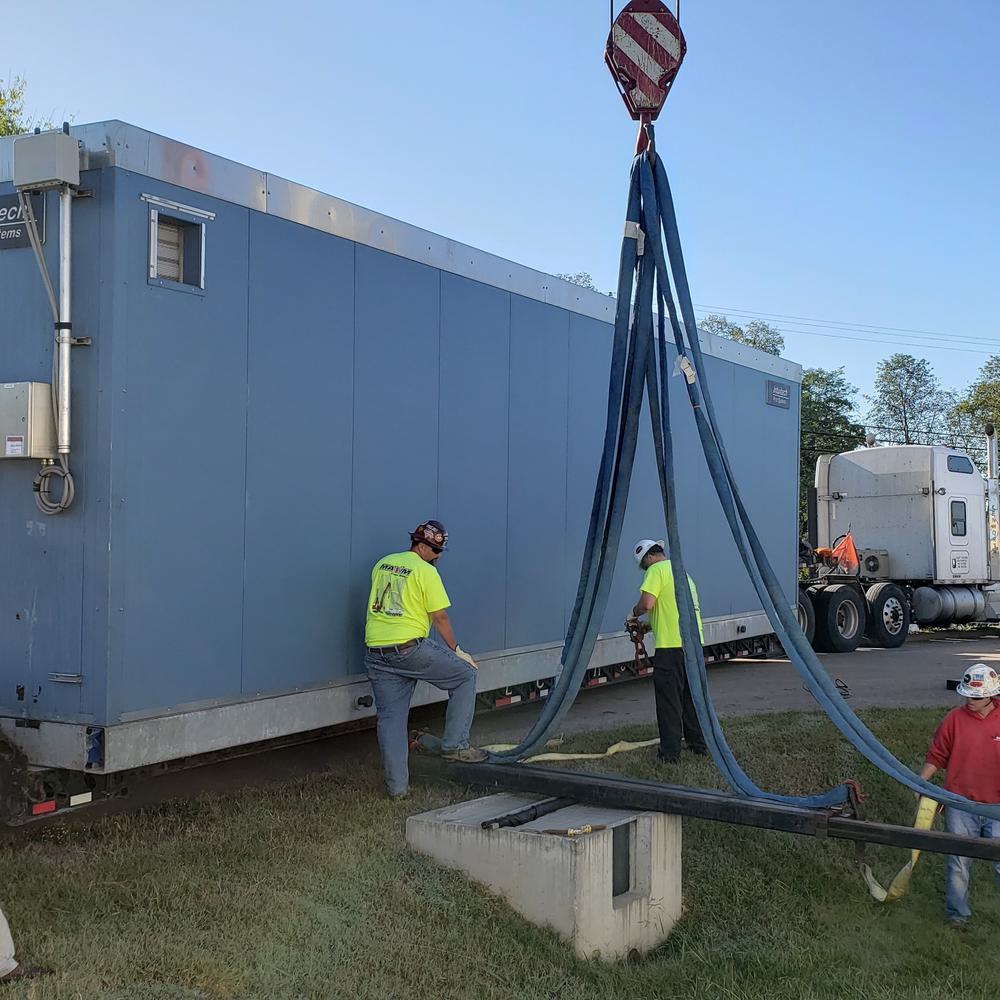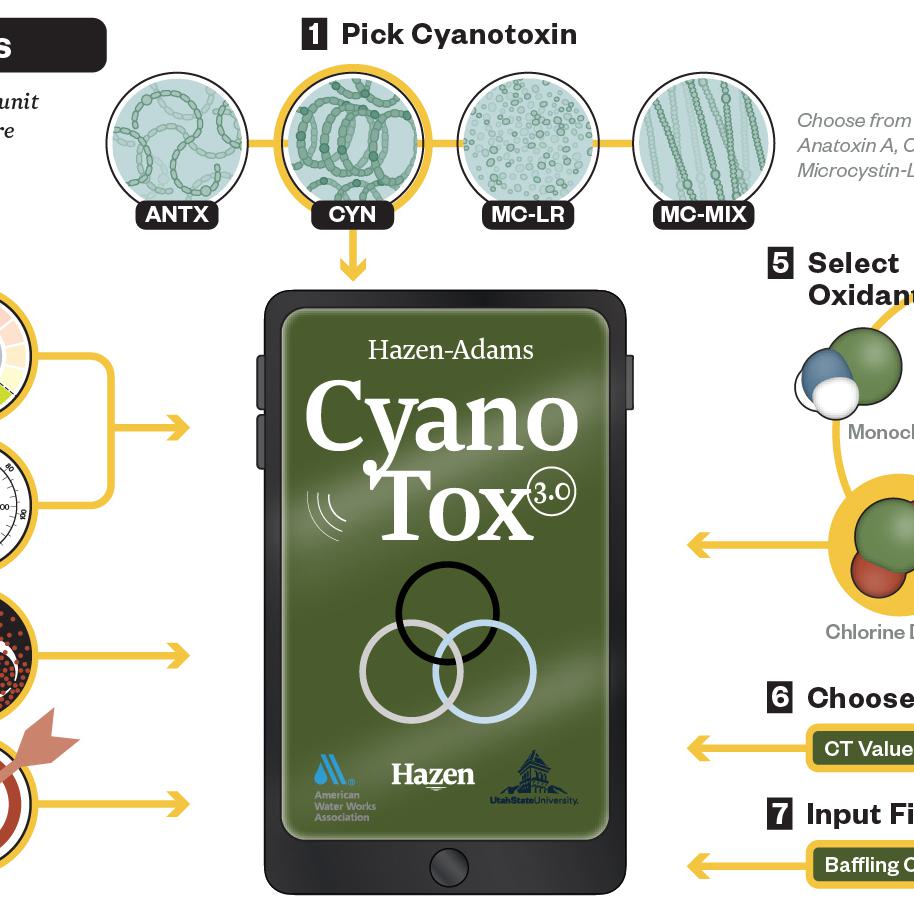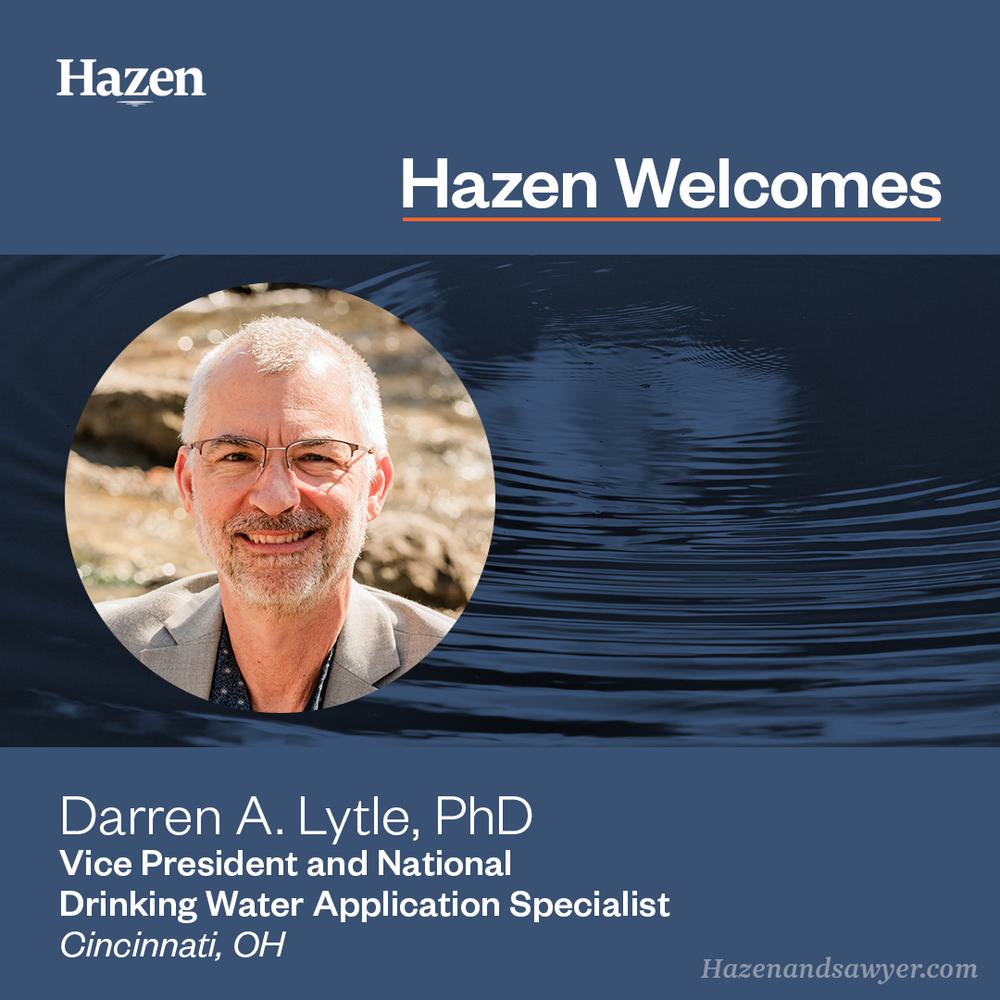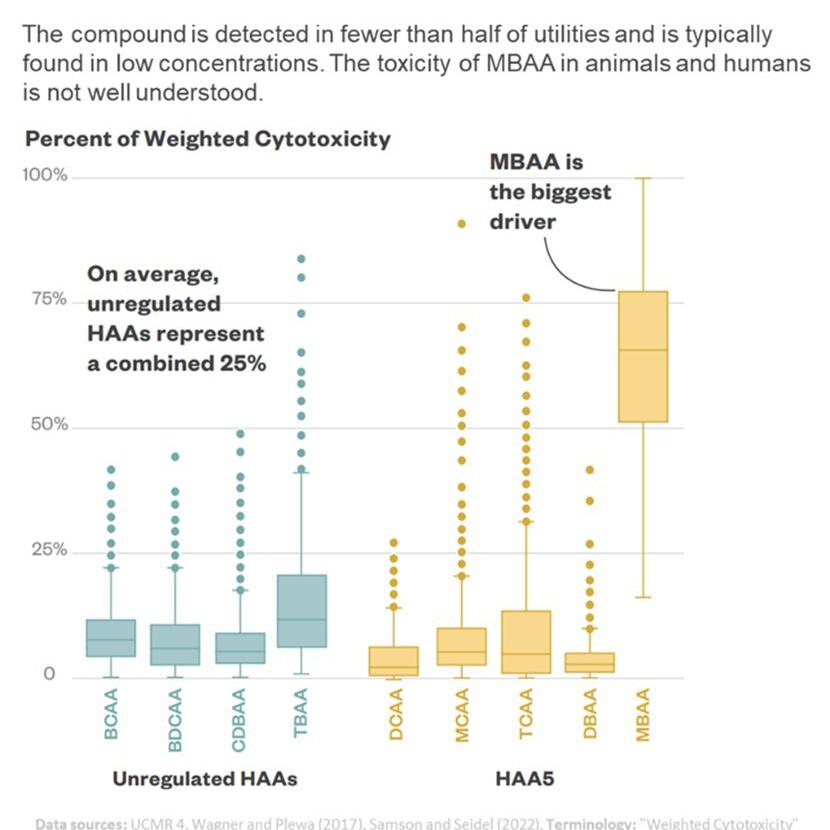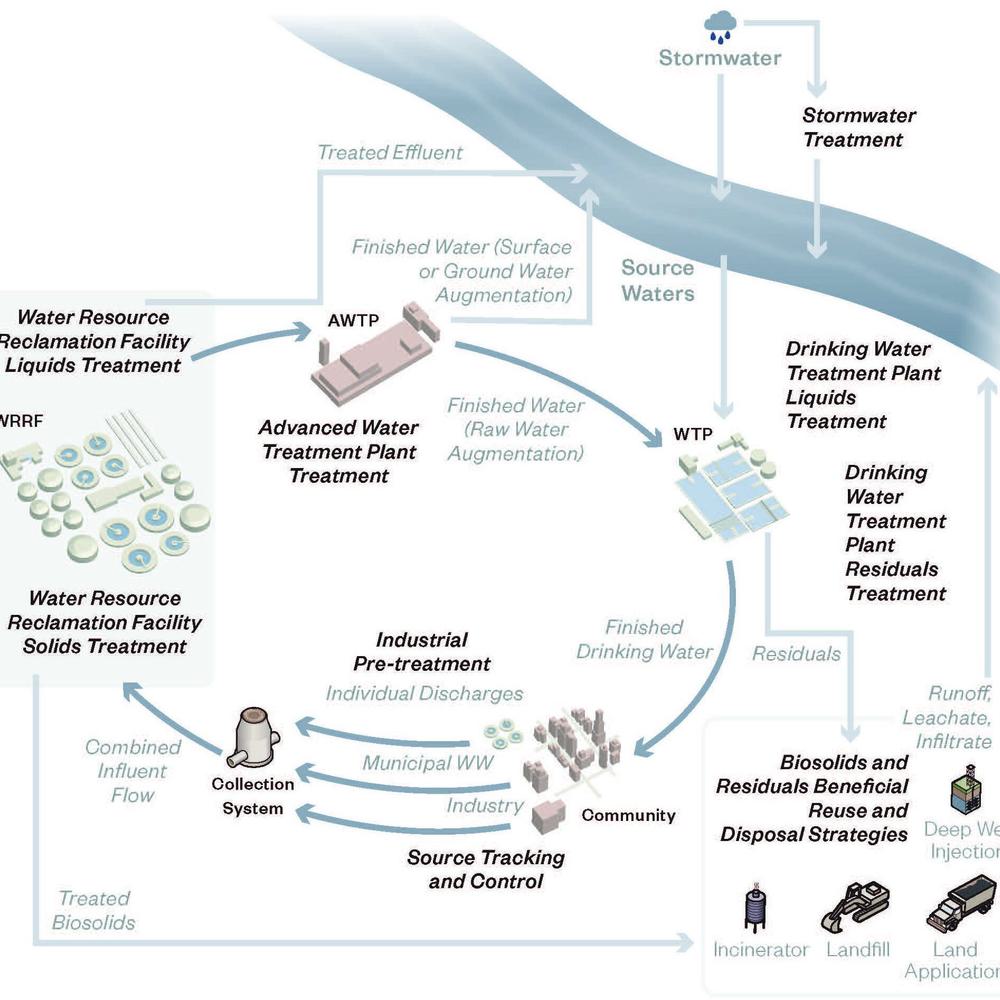The Algae Innovators
Reports of freshwater harmful algal blooms (HABs) are increasing. What can water utilities learn from one Ohio city’s creative use of DAF and a bioreactor to keep HABs out of its water?
The only source of drinking water for Celina, a city of 11,000 in western Ohio, is a manmade lake no deeper than a swimming pool. Grand Lake St. Marys runs nine miles long, three miles wide, and just five to seven feet deep throughout. Often, especially in the heat of summer, its waters turn Grinch green from cyanobacteria.
Blooms of the microorganisms—which are technically bacteria but often called blue-green algae—have plagued Grand Lake for decades. They choke out other aquatic life. When they produce microcystin, a toxin that can cause diarrhea, headaches, and pneumonia, the state sometimes issues recreational advisories. And they create uphill work for Celina’s drinking water treatment plant.
“As a kid, I remember the water coming out of the tap tasting like carp—like you’d licked a fish,” said Mike Sudman, a Celina native who oversees drinking water treatment and distribution for the city.
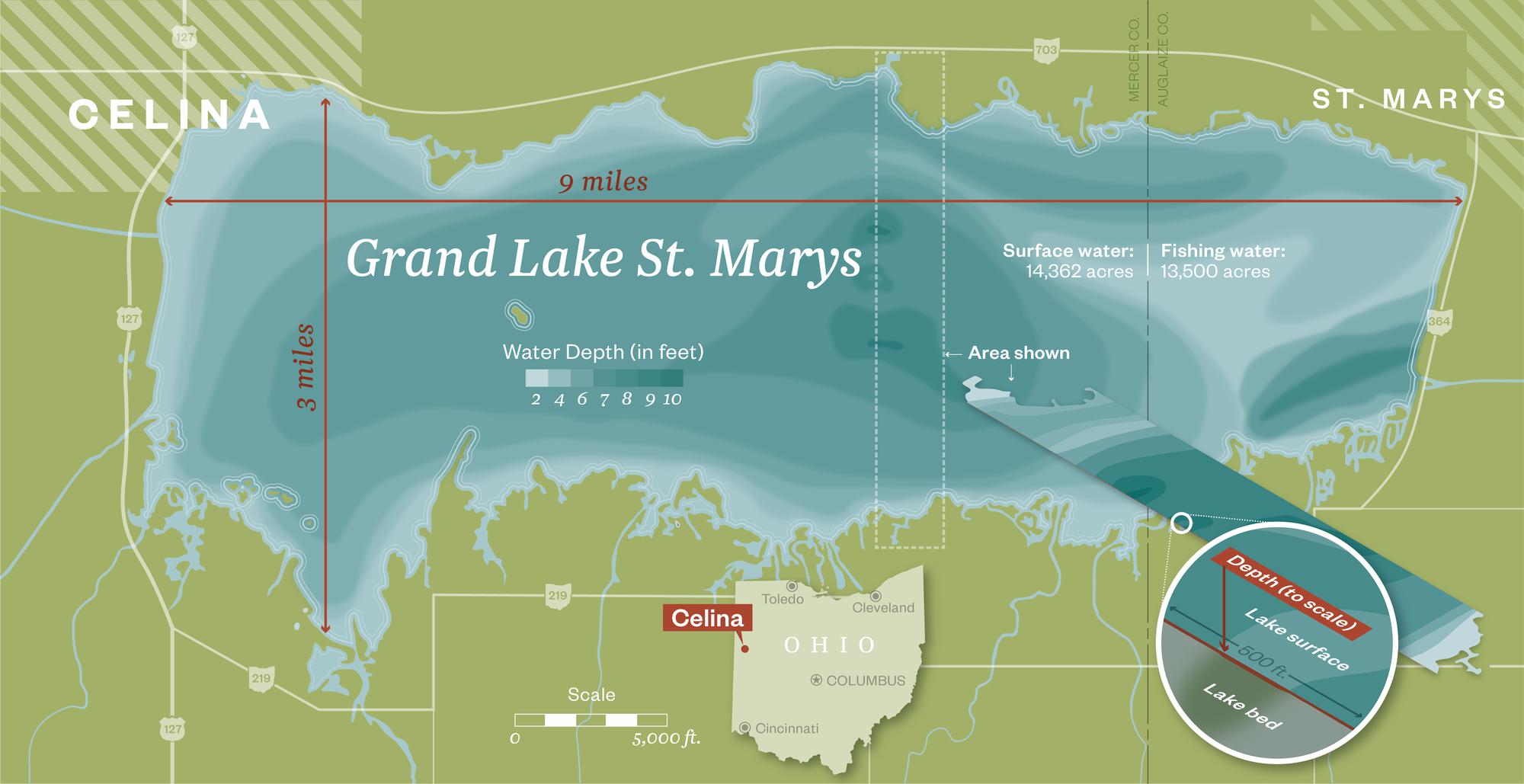
Above: When the 13,500-acre Grand Lake Saint Marys was completed in 1845, it was the world's largest man-made reservoir. Top of page: Hazen’s Emma van Dommelen collects samples from one of Celina’s new dissolved air flotation (DAF) units.
The plant Sudman oversees today, however, is one of the most sophisticated in the state. The tap water lost its carp flavor back in the ‘90s with the installation of an ozone system. In the mid-2010s, a new ultraviolet (UV) light unit added another layer of protection against the algal blooms.
More recently, Hazen worked with Sudman and his team to complete a groundbreaking upgrade that included a new dissolved air flotation (DAF) system. Rather than using gravity to separate solids from water, DAF systems use tiny air bubbles to float them to the surface before skimming them off the top.
Sudman said the DAF system, the first of its kind in Ohio, removes 20% to 30% more cyanobacteria and other solids than the old clarifiers it replaced.
The upgrade also included a bioreactor—a biological treatment tank with a mixer—that uses native bacteria to break down microcystin. Drinking water plants don’t typically use bioreactors. But it’s working, and it has allowed Celina’s plant to turn its solids into fertilizer rather than landfill waste.

The dissolved air flotation (DAF) units installed at Celina’s drinking water treatment plant (shown above) made the city’s water utility the first in Ohio to use DAF.
“I think what made this successful overall was everyone’s willingness to try something new,” said Hazen Principal Engineer Emma van Dommelen, a key project engineer in the upgrade.
Because cyanobacteria have dominated Grand Lake for so long, Celina has sought solutions for algae issues much earlier than the average water utility. But harmful algal blooms (HABs)—the technical term for algal blooms that can pose risks to human health or aquatic life—are happening more often in many lakes and rivers that supply drinking water. Could Celina’s creative applications of DAF and bioreactors help other utilities facing similar water quality challenges?

Harmful algal blooms (HABs) have become a recurring problem in Lake Erie, the smallest (by volume) and shallowest of the Great Lakes. Above, a HAB in the lake’s western basin in August 2017. Credit: Aerial Associates Photography, Inc. by Zachary Haslick.
Trending Green
In August 2014, a hundred miles north of Celina, the city of Toledo issued a “Do Not Drink” order. A harmful algal bloom was producing microcystin in Lake Erie, and the toxin had been detected in the city’s tap water at levels above Ohio’s drinking water advisory threshold. The order lasted two days and affected 500,000 people.
The blooms at Grand Lake and Lake Erie are far from isolated events. HABs can happen in both marine and freshwater environments, and across the U.S., public advisories and closures related to freshwater HABs have climbed steadily since the EPA began tracking them in 2015. The agency logged more than 500 in August 2024 alone, a new record. Researchers have also used satellite data to show that summer algal blooms are becoming more intense in lakes around the world.

It’s worth mentioning that the microorganisms behind these blooms have been around far longer than we have. Some of the oldest known fossils, stromatolites, were created by cyanobacteria more than three billion years ago. Scientists think blue-green algae were responsible for oxygenating the atmosphere, which is to say our own species (a youthful 300,000 years old) might not exist without them. And algae are a key link in numerous freshwater and marine food chains today.
But when their populations explode into HABs, cyanobacteria and algae keep sunlight and oxygen from other species that need them. Fish often suffocate. The water both looks gross and reeks.
Cyanobacteria can also produce harmful substances called cyanotoxins. The Environmental Protection Agency (EPA) enacted health advisory limits for two cyanotoxins, microcystin and cylindrospermopsin, in drinking water in 2015, and recreational water quality criteria for both toxins in 2019.

A stromatolite fossil formed by ancient cyanobacteria colonies. Besides being one of the oldest known life forms on earth, cyanobacteria are widely believed to be “ancestors” of chloroplasts, the structures that power photosynthesis in plants.
Cyanobacteria and algae tend to thrive in warm, nutrient-rich waters, and the EPA expects HABs from cyanobacteria in particular to spread and last longer as global temperatures increase. But Hazen Senior Principal Scientist Liz Crafton said that pinning specific causes to specific blooms—such as those in Grand Lake—is tricky.
“Cyanobacteria are extremely sophisticated despite being prokaryotes,” said Crafton, who researched blue-green algae for her civil engineering PhD and helped execute the bioreactor portion of Celina’s upgrade. “It’s difficult to study and understand their responses.”
What is clear is that such blooms can pose treatment challenges for drinking water providers. A string of other cities besides Toledo have issued “Do Not Drink” orders due to algal toxins in the past decade—most recently, Mattoon, Illinois, in July 2025.
Even when they don’t generate toxins, HABs add extra solids to source waters, which can slow down or hinder treatment processes. On July 3, 2024, the night before Independence Day festivities, the District of Columbia and parts of Virginia’s Arlington County issued brief boil water advisories due to a HAB of green algae on the Potomac River. The algae had clogged filters at a key water treatment facility.
A Poster Child for Harmful Algal Blooms
But the city of Celina has decades of experience contending with HABs. Its source water has left it no choice.
“We have the worst source water of any utility in Ohio,” said Mike Sudman. “And we’re a small system with a limited budget.”
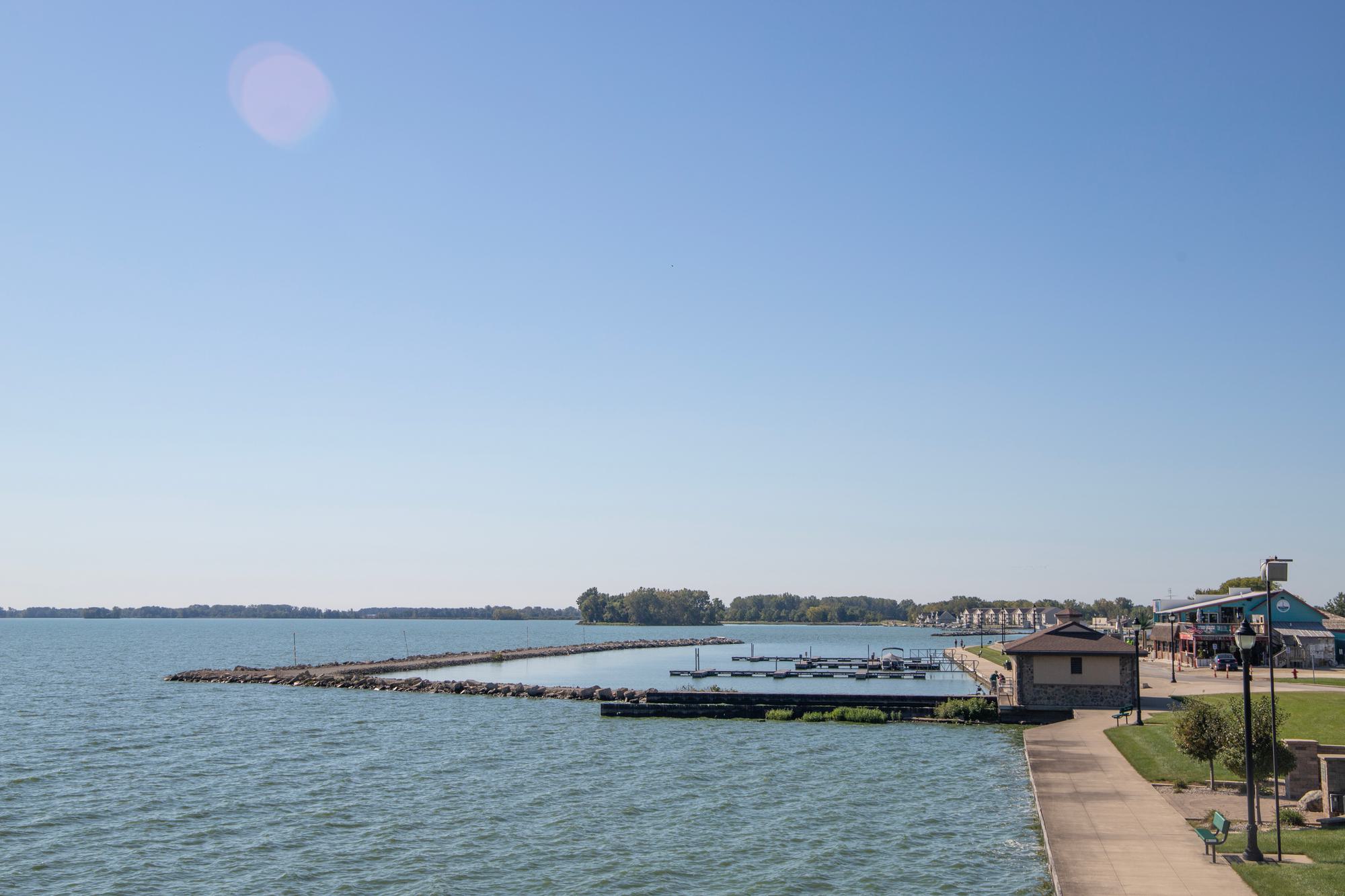
Grand Lake Saint Marys (above) is a popular spot for outdoor recreation. But harmful algal blooms (HABs) from cyanobacteria sometimes turn its water green and produce the toxin microcystin, posing drinking water treatment challenges for Celina.
Immigrant laborers dug Grand Lake St. Marys by hand in the 1830s and ‘40s to be a reservoir for the Miami and Erie Canal. When it was completed in 1845, it was the world’s largest artificial reservoir, but too shallow for diving. These days, the lake is a popular destination for boating and recreation—algal blooms permitting.
“The lake is shallow, it gets plenty of sunlight, it’s surrounded by farms that are putting plenty of nitrogen and phosphorus into the water, and you get the wind to stir it up. It’s like it was designed to become an algae incubator,” said Hazen Senior Associate Matt Charles, who led the DAF portion of the upgrade.
“This is one of the most complicated drinking water plants I've ever seen,” Bret Casey said. “The fact that Mike Sudman can get it to meet drinking water standards, given what he’s starting with, is amazing. He’s a water magician.”
“Grand Lake is a poster child for harmful algal blooms,” echoed Emma van Dommelen.
Microcystin has never been detected in Celina’s drinking water, but the state routinely issues recreational advisories for Grand Lake based on its recreational advisory limit of 8 micrograms per liter. Sometimes, the blooms—and warnings about them—last all year. One recreational advisory stayed in place for 832 days, from February 2019 to May 2021.
Local organizations and the Ohio Department of Natural Resources have restored thousands of acres of wetlands around the lake and helped some farmers adopt more environmentally friendly practices. As a result, Grand Lake’s water quality has improved significantly in recent years. But HABs are still common there.
In 2016, Hazen even helped Celina explore the possibility of building a new reservoir for the city’s wastewater and sending that to its drinking water treatment plant instead of water from the lake.
But water recycling was a new concept for Ohio at the time; regulators weren’t ready to greenlight it. Hazen instead helped the city add an ultraviolet light advanced oxidation process (UV AOP) to the water plant to add another layer of protection against Grand Lake’s HABs. Meanwhile, Sudman requested Hazen’s help with two other challenges related to the facility’s clarifiers and solids handling process.
Making an Algae “Bundt Cake” with DAF
For starters, the plant’s clarifiers had been operating since 1974, when “Happy Days” debuted on TV. And they’re upflow clarifiers, which are “designed around things sinking,” Charles said. That’s a problem when you’re dealing with buoyant solids like cyanobacteria.
“It would be kind of like trying to sink Styrofoam when the water is moving up,” he explained.
Two parallel reactors (silver pipes) in Celina's finished UV AOP system.
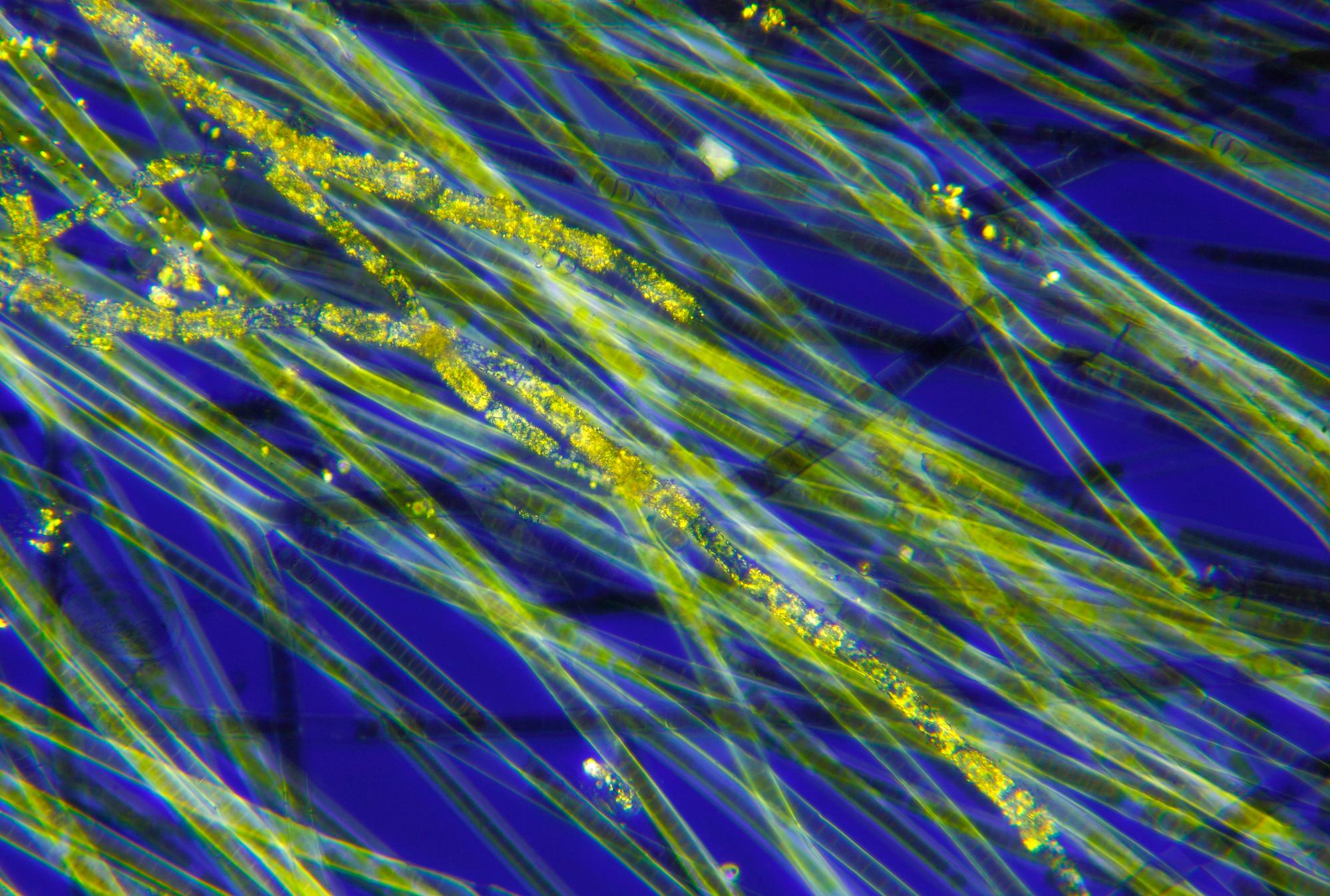
Strands of Oscillatoria, a type of filamentous cyanobacteria, under a microscope. Many species of cyanobacteria contain gas-filled pouches that give them buoyancy, making it hard to separate them from water using gravity-based clarifiers.
Sudman suggested replacing the clarifiers with a dissolved air flotation (DAF) system. This was the first time an Ohio drinking water utility had considered DAF. But Hazen Vice President Matthew Valade, an expert in DAF, said Hazen has been designing DAF systems since the early 1990s, and “it’s becoming much more of an understood technology for being able to address algae.”
“[DAF is] more effective for algae and cyanobacteria, because it forces them to go where we want them to go, and where they typically naturally go in water,” van Dommelen said. “It’s a gentle process. It’s less likely to rupture the cells and release any cyanotoxins.”
Charles ran lab tests using a DAF configuration on the plant’s water and saw “that the DAF process worked extremely well for their water,” he said.
Working with Hazen Midwest Water Practice Leader Bret Casey, who led the overall upgrade, Charles then helped Celina pilot an innovative DAF system the city was interested in and bid it against a more traditional DAF setup. Both worked well but the latter proved more cost-effective, so van Dommelen helped design an upgrade with the traditional configuration that could fit within the plant’s small footprint.
Charles said it was fascinating to see the algae piling up on the surface of the water.
“It almost looked like green bread. Picture a bread texture, where you slice it and can see little air pockets from the yeast,” he said. “We called it the bundt cake.”

Above left: Dissolved air flotation (DAF) systems use air bubbles to float solids to the water’s surface before skimming them off. Above right: Hazen’s Matt Charles said the DAF he helped Celina try out collected so much blue-green algae that it looked like “green bread.”
From Clarifier to Bioreactor
The other problem was what to do with all that “bundt cake” once it was out of the water. For quite some time, Celina’s drinking water treatment plant had been sending the solids it removed from the water to farms, which used it to enrich their soil.
But by 2019, Ohio was considering capping the amount of microcystin allowed in drinking water solids applied to croplands. State officials had detected high levels of microcystin in Celina’s drinking water solids. If a limit were enacted, the city might have to send them to landfills, which, unlike farms, charge by the truckload for everything they receive. (The state has since begun enforcing a limit of 20 parts per billion for microcystin in land-applied solids.)
“Even if they could find a landfill that could take the solids—that would take them—the cost would be prohibitive,” Casey said. “Beneficial reuse is essential for them.”
When Crafton was added to the project team in 2019 to tackle that conundrum, she quickly teamed up with van Dommelen, whose algae knowledge impressed her.
“My dad is a self-taught microbiologist,” van Dommelen said. “I grew up looking into a microscope.”
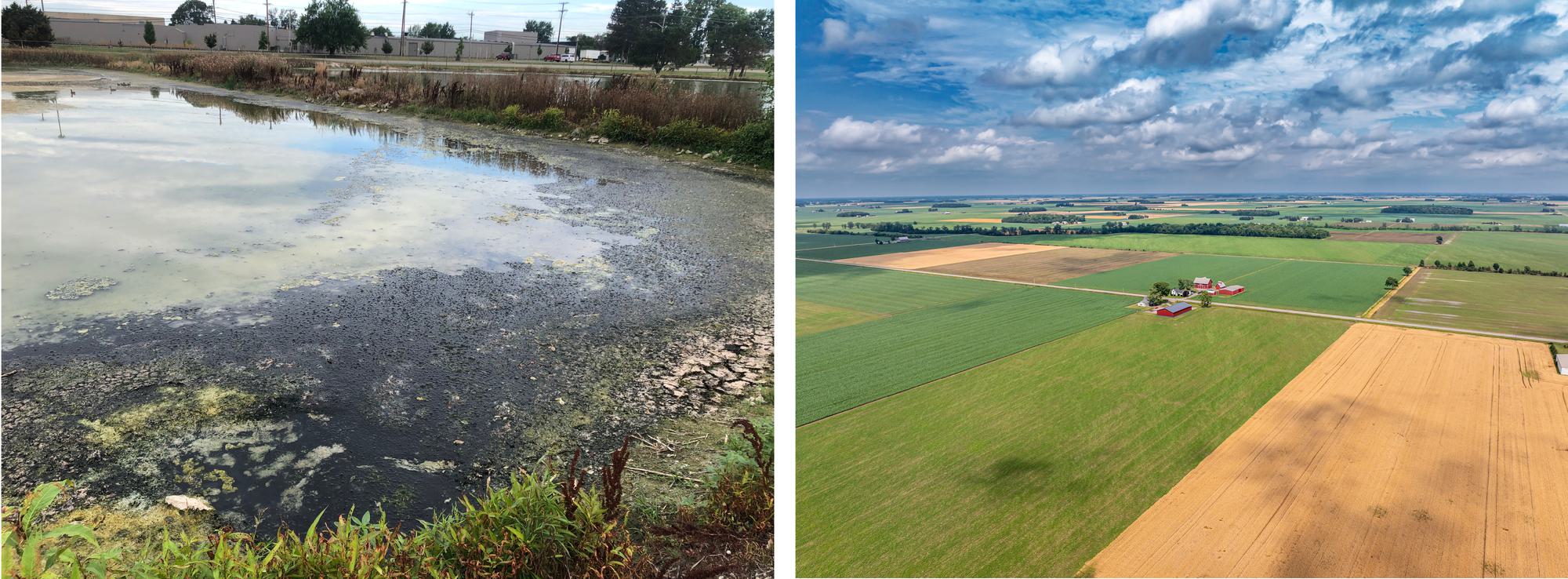
Celina’s drinking water treatment plant stores solids removed from the water in lagoons (above left) before sending them to farms (above right) that use them as crop fertilizer.
The drinking water plant holds its solids in a trio of lagoons for a while before shipping them out to farms. Crafton and van Dommelen noticed in some prior testing data that the longer the solids hung out in those lagoons, the lower their microcystin levels dropped. It seemed possible that other bacteria native to Grand Lake could be spurring the breakdown; existing research had proven that true in Lake Erie.
The team decided to add a bioreactor—a tank filled with beneficial bacteria—between the DAF unit and lagoons to see if it could speed up the degradation of microcystin. They could repurpose one of the old clarifiers for that and add mixing equipment to give the bacteria some extra oxygen.
“No other drinking water plant has a bioreactor for their solids,” Crafton said. “We don’t normally think of solids in drinking water plants being biologically treated.”
To test it, Crafton and van Dommelen ran the setup at a small, experimental scale in an Ohio State University lab in late 2019. They pulled long hours hunched over petri dishes and testing equipment.
“You can’t pause bacteria, so time is of the essence with this kind of research,” van Dommelen said. “Procedures have to be done very consistently, every day. We did 10 days in a row at one point.”
Because of time constraints, Sudman’s team simultaneously piloted a bioreactor onsite and shared the data with Crafton and van Dommelen as they worked in the lab. By the time the COVID-19 pandemic hit the U.S. in 2020, forcing the lab to close, the team had enough data to show that the bioreactor was indeed speeding up the degradation of microcystin in the solids.
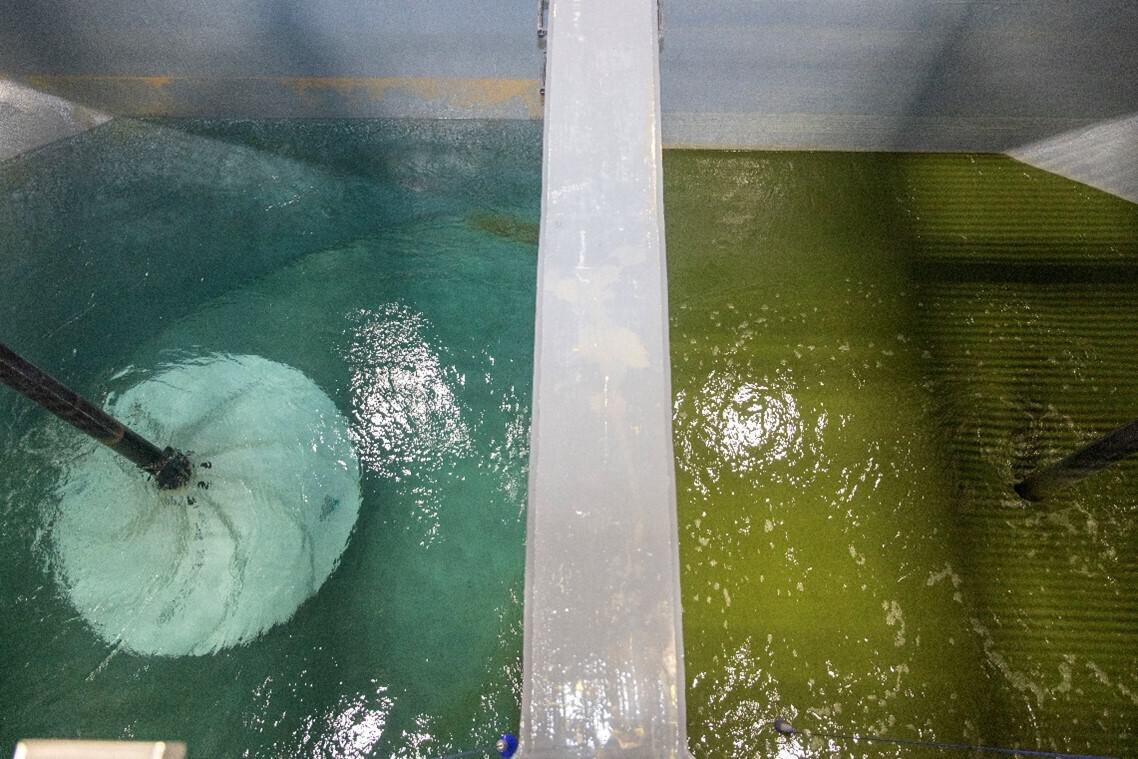
A chamber of the bioreactor filled with clear water (above left) beside one filled with drinking water solids (above right). The mixing arms are visible in each.
The researchers were also able to show that the state’s testing method could overestimate the presence of microcystin in the solids. When they presented an alternative method, one more robustly supported by research, the Ohio EPA worked with them to approve a site-specific land application permit for Celina’s drinking water solids.
“That totally changed the numbers we had,” Sudman said of the microcystin levels. “We used to have really high numbers when you ran it differently.”
“A Water Magician”
Van Dommelen, who assisted with many pieces of the upgrade, said that “it was basically three projects happening at once, during a pandemic, so it was very complicated.” Construction of the upgrade started in August 2020 and finished roughly a year later.

Above, construction workers install rebar before pouring concrete over it to make the base of the dissolved air flotation building. Sudman’s small team handles much of the drinking water plant’s construction needs themselves.
Sudman said the new equipment has been saving his team resources ever since. He estimated that the new DAF system removes about 90% of all solids, blue-green algae included, from the water—a much higher removal rate than the old clarifiers could achieve. Since installing it, his team has also been able to use about 20% less coagulant and around 90% to 95% less permanganate, another treatment chemical.
“Being able to cut your coagulant dose by 20% is a pretty major accomplishment for any utility,” Charles said. “I think it’s a good demonstration that DAF can be used even in heavily impacted water sources.”
“Being able to cut your coagulant dose by 20% is a pretty major accomplishment for any utility,” Charles said. “I think it’s a good demonstration that DAF can be used even in heavily impacted water sources.”
While Celina's water plant was the first in Ohio to use DAF, other utilities are also using DAF to remove algae and cyanobacteria in places ranging from Texas to Washington State to Ontario.
“It makes a ton of sense, and it’s something we should think about more,” Charles said.
While Sudman hasn’t been able to leave solids in the full-scale bioreactor for as long as Crafton and van Dommelen did in the lab, he said using the bioreactor has still tangibly shortened the amount of time it takes to break down the microcystin in the solids. And his plant can keep sending those solids to farms rather than landfills because of the new permit.

Celina’s new building for the dissolved air flotation (DAF) units during and after construction (above left and right, respectively). Hazen helped the drinking water plant fit the DAF building within its small existing footprint.
The project won an Outstanding Achievement Award from the American Council of Engineering Companies of Ohio in 2022, as part of its annual Engineering Excellence Awards.
“Seeing the evidence that biodegradation of these toxins is possible with bacteria that are native to the area, to that body of water, was just so cool,” said van Dommelen, who used the microcystin research to help complete a civil engineering master’s degree at Ohio State.
Van Dommelen thinks the bioreactor setup could be worth considering for other utilities grappling with cyanobacteria challenges—particularly those hoping to beneficially reuse their solids.
In May 2025, the Ohio EPA issued another round of recreational advisories for toxic algal blooms at various beaches along Grand Lake. Months later, in mid-August, all of them were either still active or reactivated. But the tap water in Celina remained safe to drink. Lately, Sudman said, his team had been testing whether adding some peroxide solution to the bioreactor could further boost its performance.
